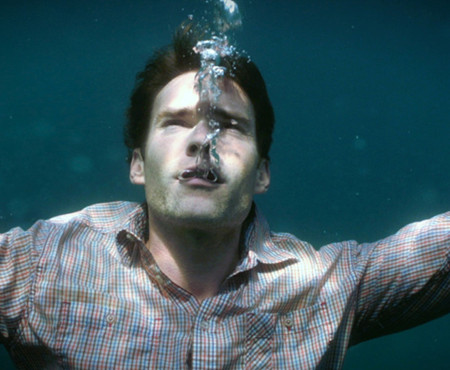He doesn’t look special, just another face in the crowd of dancers onstage. If the camera wasn’t fixed squarely on Justin Peck, your eyes may wander over to the other ballerinas leaping around him, to the grandiose scenery behind, before pausing to take in the activity of the orchestra pit during a production of the New York City Ballet. Peck does not fit the part of a haughty or eccentric dancer a documentary filmmaker would want to follow, but a recent job opportunity will change the weight of his story. The 25-year-old background dancer was given the charge of choreographing the renowned company’s 422nd original ballet. The NYCB handed two months of studio time, company members, the in-house orchestra, and an army of production, lighting, and costume designers to the first-time choreographer. Ballet 422 follows the unknown dancer from obscurity to directing his fellow ballet dancers and working around the clock to pull off the impossible task.
To put on a fresh coat of paint on a dance that had most of its language codified in 19th century France is no easy feat. The filmmakers capture the collaborative process between choreographer, dancers and designers. When working with soloists, Peck listens to his dancers and tweaks his choreography to better suit their natural rhythms. He doesn’t rebuff advice and incorporates suggestions fluidly from several different sources. This documentary is just as much about them as it is about Peck. Director Jody Lee Lipes has filmed dance before, having directed a version of a Jerome Robbins ballet for “NY Export: Opus Jazz.” He has an eye for detail, something we notice in Ballet 422 when there are careful close-ups of a dancer’s strained face or a perfect sequence of the tedious chore of dying toe shoes to the right swatch color, as he showed in his previous work as a cinematographer on Martha Marcy May Marlene and Tiny Furniture.
Lipes’ old-school documentary style cuts the use of talking heads, a staple in dance docs. So often, those movies grinds to a halt as choreographer extrapolates the inspiration behind his or her work or the history of the piece in progress. In Ballet 422, the process feels organic, naturally developing bit-by-bit without Peck standing aside and delivering a monologue about techniques that inspired his dance. When we do hear from him, it’s in the midst of conversation, like when he’s walking through his vision with a lighting tech or throwing costume ideas to a pair of designers.
Whether necessitated by the number of mirrors used in a dance studio, NYCB’s reluctance to share a recording of their commissioned ballet with a documentarian, or artistic vision, the camera alternates between full-body shots capturing the dancer’s whole movement on stage to portrait-style shots that miss the legs and sometimes the arms of dancers. There’s at least one moment when the camera crew accidentally ends up in frame because of their moving subjects. In ballet, the story is in the use of the entire body. Our eyes bounce from detail to big picture effortlessly, but a camera directs your line of sight. Lipes’ decision to split time between full body, ¾ shots, and close-ups left me feeling as though I never saw Ballet 422 at all. The creative journey is there, fascinatingly captured, but in terms of dance, I wish I saw more of it.
Besides potentially leaving you with the feeling you’ve yet to accomplish anything great in life, the documentary is a pleasant twirl through the hallowed backstage halls at Lincoln Center. Perhaps the best sequence is at the end. After a dizzying premiere of his ballet, Justin Peck drops the tux and gets back in full makeup and costume for the evening’s next show. The story ends where we first met Peck, waiting in the wings as part of the ballet corps. What role he will play next in the company is yet to be determined, but Ballet 422 proves Peck is ready for the spotlight.





















One thought on “Tribeca Review: “Ballet 422””
Pingback: Here Is TV – Daily Primetime Recommendations | Ballet 422